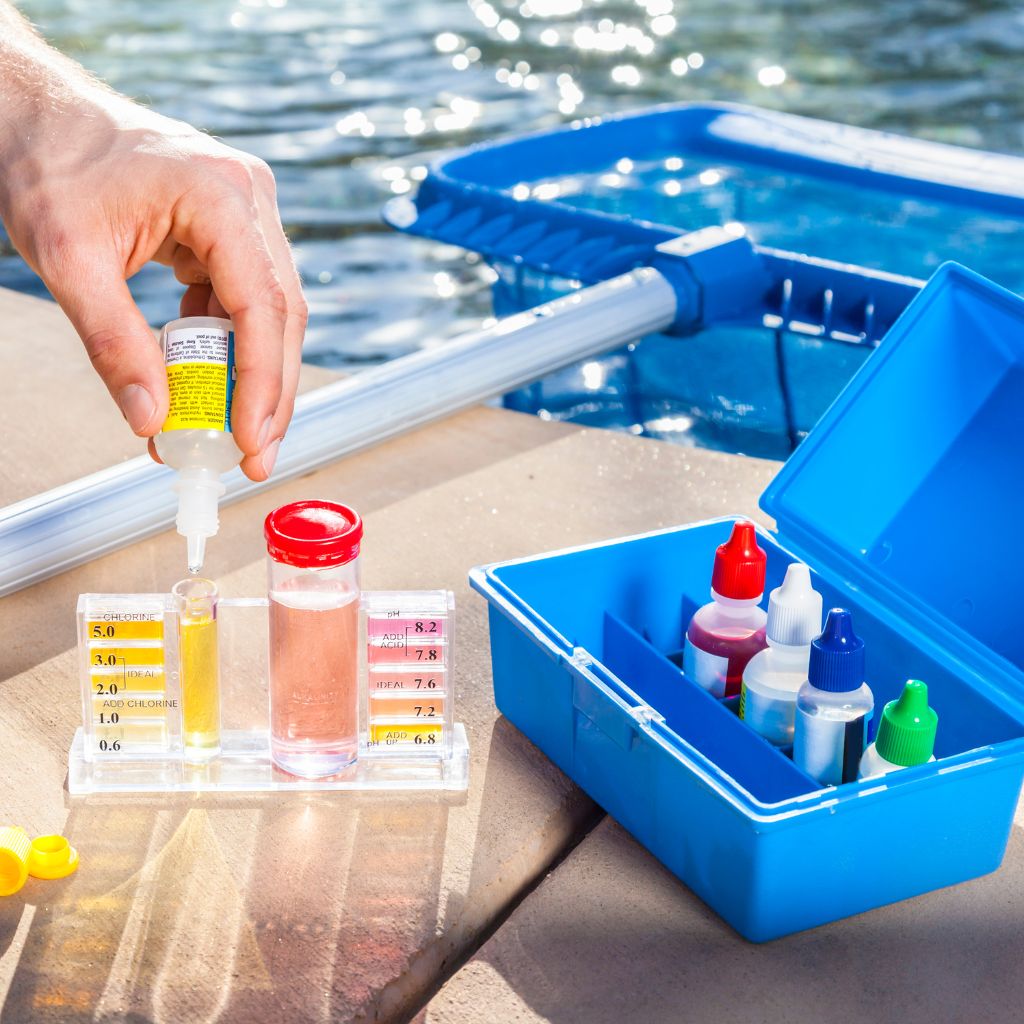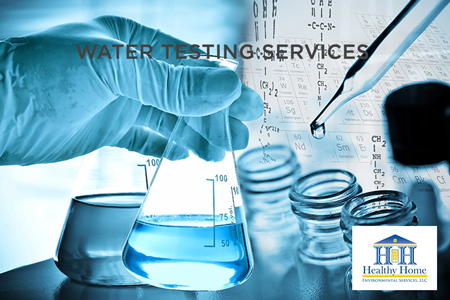Specialist Water Testing Services Orlando: Guard Your Water Top Quality
Specialist Water Testing Services Orlando: Guard Your Water Top Quality
Blog Article
Comprehend the Importance of Water Testing in Maintaining Compliance With Health Requirements
In the world of public wellness, understanding the significance of water testing is essential for maintaining compliance with rigid health and wellness standards established forth by reliable bodies like the That and EPA. What are the specific approaches used in water testing, and exactly how do they guarantee that our most important resource remains uncontaminated?
Secret Wellness Standards for Water
Making sure the security and top quality of drinking water is paramount, as it straight impacts public health. Strict wellness standards are developed to secure individuals from waterborne diseases and contaminants that can result in unfavorable wellness impacts. The World Wellness Company (THAT) and national agencies like the Environmental Defense Company (EPA) in the USA set standards and regulatory limits for numerous physical, chemical, and organic specifications in alcohol consumption water.
These standards are based on substantial clinical study and are regularly assessed to include new findings and technical improvements. Key criteria include microbial impurities such as infections and germs, chemical contaminants like lead and arsenic, and physical features such as turbidity and pH degrees. Compliance with these standards ensures that water is complimentary from unsafe substances and is aesthetically pleasing to the consumer.
Water screening plays an essential function in confirming compliance with these health requirements. Regular monitoring and screening help recognize possible concerns before they pose a considerable wellness threat, permitting prompt intervention and removal. By abiding by these criteria, water suppliers can keep public confidence in the safety of the neighborhood's water system, consequently securing public wellness successfully.
Usual Contaminants Spotted
When assessing water top quality, what are the most common contaminants that often tend to be found? Microbial pathogens, consisting of germs like Escherichia protozoans and coli such as Giardia and Cryptosporidium, are regularly located in water resources, positioning considerable wellness risks if ingested.
Chemical impurities are likewise a key issue. Nitrates, frequently arising from farming fertilizers, can bring about serious health and wellness issues, particularly in infants. Heavy metals such as lead, arsenic, and mercury, usually presented via industrial discharge or natural natural resource, can have long-lasting hazardous impacts. Unpredictable natural substances (VOCs) and pesticides, by-products of industrial activities and agricultural methods, more add to water contamination.
Inorganic compounds such as fluoride and chlorine, although sometimes intentionally included to water for health and wellness benefits, can become troublesome at elevated degrees. Emerging impurities, including pharmaceuticals and individual treatment products, are significantly being discovered, raising worries about their prospective influence on human health and wellness and communities. Resolving these pollutants is essential for safeguarding public wellness and making certain water quality conformity.
Methods of Water Screening
Water screening's precision is critical for determining contaminants and guaranteeing safety and security compliance. Water Tesing Services Tampa. To achieve exact results, different approaches are employed, each tailored to find details impurities and align with regulative requirements. One widespread technique is spectrophotometry, which gauges the absorption of light by chemical substances in the water, thus determining aspects like phosphates and nitrates. This approach is useful for its level address of sensitivity and specificity.
Chromatography is another innovative approach utilized, specifically for natural contaminants. By separating blends into individual elements, it permits for thorough analysis of complicated pollutants. Gas chromatography and fluid chromatography are commonly used variations, each fit for different compound types.
Microbiological screening is essential for identifying pathogens such as bacteria, viruses, and protozoa. Strategies such as membrane layer filtering and multiple-tube fermentation are employed to society and determine microbial visibility. These approaches are important in guarding public health and wellness by guaranteeing microbial safety and security.

Advantages of Routine Testing
Comprehending the numerous techniques of water screening highlights the need of normal testing practices to maintain water quality. Routine water testing acts as an aggressive step to recognize potential pollutants before they rise into serious wellness dangers. By constantly monitoring water high quality, organizations can discover contaminants such as germs, hefty steels, and chemical deposits early, permitting for prompt treatments that stop carcinogen and pricey removal efforts.

Furthermore, regular screening ensures that water supply follow well-known health criteria and regulations. This compliance is critical for preventing legal penalties and keeping the count on of stakeholders and customers. Regular water top quality evaluations assist identify patterns or variations in water make-up, giving valuable data that can direct operational decisions and resource administration techniques.
In addition, routine water screening fosters public confidence by showing a dedication to security and openness. In markets such as local water food, medical care, and supply handling, keeping high water high quality requirements is important to safeguarding public health. Regular screening additionally supports ecological sustainability by making certain that water sources are handled properly. In general, the benefits of normal water screening extend beyond conformity, improving operational effectiveness, public safety, and ecological stewardship.
Steps to Make Certain Compliance
To guarantee conformity with water quality policies, organizations need to implement a structured method including both precautionary and corrective actions. At first, a comprehensive risk evaluation need to be conducted to identify potential contamination resources and Read More Here susceptabilities within the water system. This analysis educates the development of a tailored water administration plan that details certain examining methods, regularity, and criteria called for to meet regulatory standards.
Succeeding to the preparation stage, companies need to develop a timetable for normal water screening that complies with both regional and national standards. Utilizing accredited laboratories ensures the precision and integrity of examination outcomes. Any type of discrepancies Read Full Article from acceptable water quality criteria have to trigger immediate corrective activities, such as system cleansing, repair services, or modifications in treatment procedures.
Moreover, preserving comprehensive records of all screening activities, outcomes, and restorative actions is important for showing conformity during audits and evaluations. Regular training and updates for team associated with water management procedures are important to ensure they recognize current laws and finest practices.
Verdict
Routine water testing is crucial for preserving compliance with wellness standards established by organizations such as that and EPA. By determining contaminants like microbial virus, heavy steels, and chemicals, testing makes certain that drinking water continues to be risk-free. Aggressive tracking shields public health and wellness, sustains regulative conformity, and fosters self-confidence in water quality monitoring. Additionally, consistent screening promotes environmental sustainability and safeguards areas, protecting essential water sources for future generations. Compliance with these standards is critical for the well-being of culture.
In the world of public health and wellness, understanding the value of water screening is indispensable for preserving compliance with rigid wellness standards set forth by authoritative bodies like the WHO and EPA. By adhering to these requirements, water service providers can preserve public self-confidence in the safety of the area's water supply, consequently securing public health and wellness properly.

In sectors such as municipal water health care, supply, and food processing, keeping high water high quality standards is integral to shielding public wellness.
Report this page